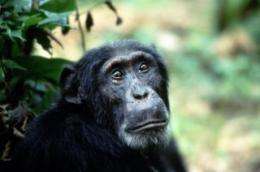Relating animals to humans could help conservation projects

New research by conservationists at the universities of Kent, Oxford, Columbia (USA) and Monash (Australia) suggests that people's tendency to relate more to animals that bear a resemblance to humans (anthropomorphism) could help improve public engagement with conservation projects.
In a paper published by the journal Biodiversity Conservation, the researchers also suggest that anthropomorphism is overlooked as a powerful tool for promoting low-profile species that are either endangered or require urgent attention.
At present, anthropomorphism in conservation is limited to social, intelligent animals, such as chimpanzees, polar bears and dolphins. According to the research, this would imply that other species are not worthy of conservation because they are not like humans in the 'right' ways.
However, by making conservationists more aware of how people construct anthropomorphic meanings around species and how they engage with species and attribute value to their characteristics – e.g. people may attribute personhood or emotions to species that they play with, such as pets or even livestock – they can create conservation programmes which speak to people through their cultural expectations and emotional connections.
Co-author, Diogo Verissimo of the University of Kent's Durrell Institute of Conservation Ecology (DICE), said: 'Anthropomorphisation of species is a common way for people to relate to other species but as a conservation tool it is under-used and is not being utilised as a way of effectively promoting the relationships between people and nature through conservation programmes.
'Despite there being some limitations of using anthropomorphism, for example inappropriate expectations of animals' behaviour or species picking up negative social stereotypes by being human-like, there is a need for more research in marketing and social sciences that will lead to more effective used of anthropomorphism in conservation outreach.'
Lead author, Dr Meredith Root-Bernstein of the University of Oxford, said: 'Scientists have been wary of anthropomorphism for a long time, because it was seen as leading to unscientific hypotheses about animal behaviour. But as conservationists we can look at it as a kind of popular folk theory of the similarities between humans and all other species. These popular ways of relating to the natural world are powerful and we should try to understand and work with them.'
More information: Root-Bernstein, M. et al. Anthropomorphized species as tools for conservation: utility beyond prosocial, intelligent and suffering species, Biodiversity Conservation, Issue 8, vol. 22. link.springer.com/article/10.1007%2Fs10531-013-0494-4#page-1
Provided by University of Kent

















